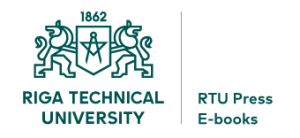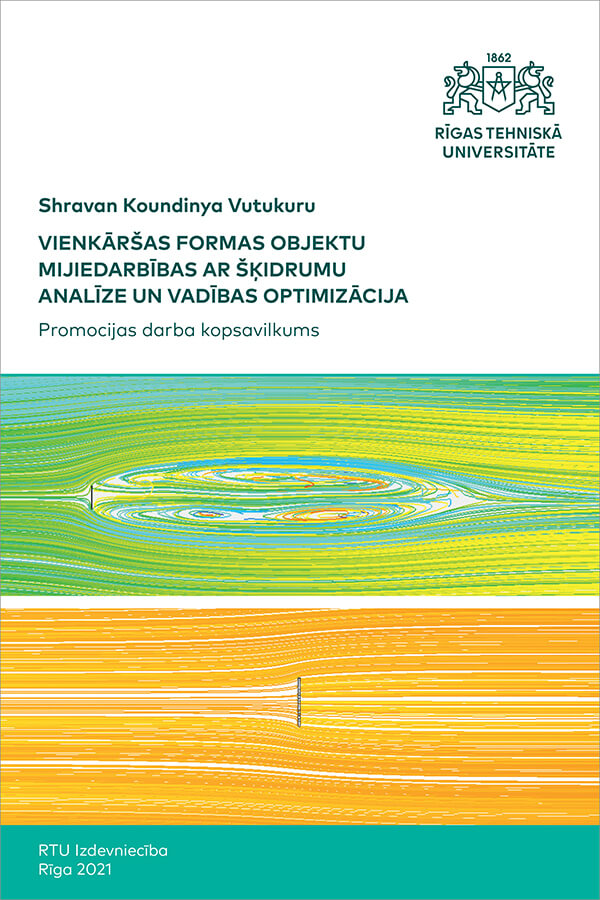Vienkāršas formas objektu mijiedarbības ar šķidrumu analīze un vadības optimizācija
Summary of the Doctoral Thesis
Shravan Koundinya Vutukuru, Riga Technical University, Latvia
![]() https://orcid.org/0000-0002-3663-2304
https://orcid.org/0000-0002-3663-2304
Fluid-rigid body interaction is an age-old phenomenon, but interestingly, a good approximated solution for the phenomenon pertaining to non-stationary body-fluid interaction is still non-existent. The solution is much more complicated due to huge system of simultaneous partial differential equations that are framed from multi-degrees of freedom, all elements in the spatial domain coupled together between all time steps. Additionally, when considering the spatial aspects of solving the system of partial differential equations, there arise a range of complexities from the type of solution technique (finite-differences, finite-volume, finite-element) and also from meshing techniques (moving, structured or unstructured). Even though advanced commercial fluid-structure interaction solvers are available, they are limited to simple objects and require frequent remeshing techniques that are time consuming and computationally expensive.
The promotion work specifically focuses solely on rigid body-fluid (air) interaction and does not consider flow reattachment or flow separation phenomenon offering an alternative approach to study the interaction phenomenon and its advantages. The basic idea of the approximated theory in the current work is to have a simplified approach through a straightforward mathematical model without considering the viscous nature of fluid medium (air). Therefore, this is an approximate theory for non-stationary body and fluid interaction phenomenon considering inputs (post-processing results) from stationary rigid body-fluid interaction performed in ANSYS Fluent (2D and 3D) where the steady state RANS equation is solved with the help of turbulence model. The concept discussed in the work will offer an alternative approach for ‘space-time’ programming techniques and also help to solve the engineering tasks of optimization and synthesis for simple form objects without requiring huge computational efforts. A new world of science for autonomous robots (underwater robotic fish with single and dual tail actuator) is explored where in an on-board power pack technique (energy scavenging from surrounding medium) is proposed that purely based on the fluid and rigid body interaction phenomenon is analysed.
Experiments on simple form objects were performed in ARMFIELD wind tunnel, available at Riga Technical University, at a constant speed of 10 m/s and validated with the computer program ANSYS Fluent (in 3D).
All the latest techniques, advantages and importance related to fluid-structure interaction phenomenon are summarized in the literature review section through various databases available over internet.
Additional information
| DOI | |
|---|---|
| Hyperlink | |
| Defence date | 17.09.2021. |
| ISBN (pdf) | 978-9934-22-664-9 |
| Format | |
| Pages | 41 |
| Published online | |
| Publisher | RTU Press |
| Country of Publication | Latvia |
| Publication language |
You must be logged in to post a review.




Reviews
There are no reviews yet.